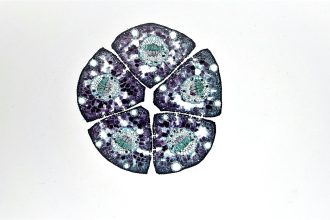UK Housebuilding Wildlife Impact: A Critical Call to Action
The Disappearing Wild: Why UK Development Threatens Nature
Imagine a landscape where native creatures once thrived, now subtly altered, their natural homes erased. This isn’t a dystopian vision, but a growing reality across the United Kingdom as accelerated housing projects reshape our countryside and urban fringes. The profound UK Housebuilding Wildlife Impact demands our immediate attention and a fundamental shift in how we approach growth.
Conservationists and environmental artists are increasingly drawing our focus to the invisible casualties of rapid development: the animals displaced, their habitats fragmented, and their very existence threatened. It’s a stark reminder that while we build homes for people, we must not dismantle the homes of our precious wildlife.
Unseen Erasures: The Cost of Lost Habitats
Every new development, regardless of scale, brings with it a footprint. This footprint often means the permanent loss or severe degradation of natural habitats, from ancient woodlands to vital wetlands and wildflower meadows. These areas are not just empty plots; they are intricate ecosystems supporting a vast array of life, from pollinators crucial for our food supply to iconic British mammals.
The speed and scale of current housebuilding targets often leave insufficient time for thorough ecological assessments or for the implementation of effective mitigation strategies. This oversight leads directly to habitat destruction, pushing many species closer to the brink. It’s a silent crisis unfolding across our green and pleasant land.
Species Under Pressure: A Biodiversity Crisis
The consequences of habitat loss are far-reaching, directly contributing to a decline in biodiversity. Many of the UK’s beloved species are already vulnerable, and the relentless march of development only exacerbates their struggle. This isn’t merely about losing a few rare species; it’s about unraveling the intricate web of life that sustains our natural environment.
- Hedgehogs: Their numbers have plummeted, partly due to habitat fragmentation and loss of foraging grounds.
- Great Crested Newts: Protected species often found in ponds and surrounding land, directly impacted by development.
- Ground-nesting Birds: Their breeding sites are frequently disturbed or destroyed by construction activities.
- Native Insects and Pollinators: Essential for ecosystem health, they suffer from the reduction of diverse plant life.
Each lost habitat represents a home taken, a food source diminished, and a vital link in the ecological chain broken.
Addressing the UK Housebuilding Wildlife Impact: Towards Sustainable Solutions
Recognizing the severity of the UK Housebuilding Wildlife Impact is the first step towards finding a balanced path forward. We can, and must, build the homes our communities need without sacrificing our natural heritage. This requires a fundamental shift in planning, policy, and public perception, prioritizing ecological balance alongside economic growth.
Sustainable development is not merely a buzzword; it’s a critical framework that allows for progress while safeguarding the environment. It involves innovative approaches to land use, careful consideration of biodiversity, and a commitment to creating spaces where both humans and wildlife can thrive.
Beyond Brick and Mortar: The Value of Green Infrastructure
Integrating green infrastructure into urban and suburban developments is crucial for mitigating the negative impacts of construction. This means more than just a few trees; it encompasses a network of natural and semi-natural areas designed to provide ecological benefits. These spaces can serve as vital wildlife corridors, allowing species to move safely between fragmented habitats.
The benefits of thoughtfully planned green infrastructure extend far beyond wildlife protection:
- Enhanced Biodiversity: Providing new habitats and connecting existing ones.
- Improved Air Quality: Trees and plants filter pollutants, making our communities healthier.
- Natural Flood Management: Green spaces absorb rainwater, reducing the risk of flooding.
- Mental Well-being: Access to nature has proven positive effects on human health and happiness.
- Climate Resilience: Green areas help regulate local temperatures and support ecosystem adaptation.
Embracing green infrastructure is not an optional extra; it is an essential component of responsible development.
Policy & Planning: Crafting a Future for Wildlife
Effective environmental policy and robust planning regulations are the bedrock of protecting our natural world. While policies like biodiversity net gain aim to ensure that development leaves nature in a better state than before, their implementation and enforcement are critical. We need stronger, clearer guidelines that prioritize ecological considerations from the very outset of any project.
This includes comprehensive environmental impact assessments that genuinely influence design and location, rather than simply being a tick-box exercise. Furthermore, strategic land planning should identify and protect key ecological networks *before* development pressures arise, ensuring the long-term viability of our ecosystems. For more information on current environmental policy frameworks in the UK, consult official government resources like gov.uk/defra.
Empowering Change: Community and Conservation Efforts
The fight to protect UK wildlife from unsustainable development isn’t just for policymakers; it’s a collective responsibility. Local communities and dedicated conservation organizations play a pivotal role in advocating for nature, monitoring local biodiversity, and holding developers accountable. Their voices are powerful in shaping local planning decisions and promoting sustainable practices.
Supporting these groups, volunteering, or simply staying informed about local planning applications can make a significant difference. Organizations like The Wildlife Trusts work tirelessly across the UK to protect vital habitats and restore nature, offering invaluable resources and opportunities for engagement. Learn more about their impactful work and how you can contribute at wildlifetrusts.org.
Moving Forward: Our Collective Responsibility
The challenge of balancing housing needs with environmental protection is complex, but the cost of inaction is too high. The UK Housebuilding Wildlife Impact is a tangible threat to our natural heritage, to the health of our ecosystems, and ultimately, to our own well-being. By demanding sustainable practices, supporting robust environmental policies, and valuing our green spaces, we can ensure that future generations inherit a country rich in both homes and wildlife.
Let’s advocate for a future where development enhances, rather than diminishes, the natural world around us. Your voice matters in this critical conversation.
Explore the devastating UK Housebuilding Wildlife Impact and the urgent need to reconsider accelerated development. Discover how safeguarding natural habitats is crucial for our future. This article delves into the ecological costs of rapid construction, offering insights into sustainable solutions and the vital role of policy and community action in protecting our precious wildlife.





